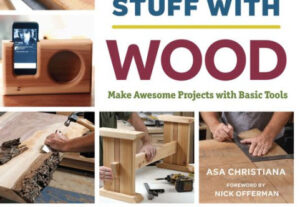When it comes to creating a beautiful and functional outdoor space, pavers are an excellent choice. They come in a wide range of colors, sizes, and shapes, making it easy to create a design that complements your home’s style. However, choosing the right pavers tools is just as important as selecting the perfect materials. In this comprehensive guide, we’ll explore everything you need to know about pavers tools so you can create stunning hardscape features with ease.
Understanding the Basics: What Are Pavers Tools?
Before we dive into the specifics, let’s take a moment to define what we mean by “pavers tools.” Essentially, these are any tools or equipment you might need when installing or working with pavers. Some examples include:
– Shovels and rakes
– Trowels and putty knives
– Masonry saws and wet saws
– Plate compactors and tampers
– Chisels and hammers
– Levels and string lines
Of course, this is just a sampling of some of the most common pavers tools. Depending on your project’s scope and complexity, you may require additional equipment.
Choosing the Right Pavers Tools: Factors to Consider
Now that we understand what pavers tools are let’s move onto the next question: how do you choose the right ones for your project? Here are some key factors to keep in mind:
1. Project size: The larger your project is, the more heavy-duty equipment you’ll need. For example, if you’re installing a small patio area, you might be able to get away with using hand tools like trowels and chisels. However, if you’re laying an entire driveway or walkway system, you’ll likely require larger machinery like plate compactors.
2. Material type: Different types of pavers will require different tools to work with them. For example, if you’re using natural stone pavers, you’ll likely need a wet saw to make precise cuts without damaging the material. Concrete pavers are generally easier to cut, so a simple masonry saw might suffice.
3. Skill level: If you’re new to working with pavers, it’s best to start with simpler tools and equipment until you get the hang of things. As you gain experience, you can gradually upgrade to more advanced tools.
4. Budget: Pavers tools can be quite expensive, especially if you need heavy-duty equipment like plate compactors or wet saws. Before making any purchases, consider what your budget is and which tools will give you the most bang for your buck.
Essential Pavers Tools for Every Project
Now that we’ve covered some of the key factors to keep in mind when choosing pavers tools let’s dive into some specific examples of essential equipment for any project:
1. Shovels and Rakes: These basic hand tools are essential for preparing your site before laying pavers. Use shovels to remove any grass or other vegetation, and rakes to smooth out the soil.
2. Trowels and Putty Knives: Once you’re ready to lay your pavers, trowels and putty knives come in handy for spreading mortar or sand between each piece.
3. Masonry Saws and Wet Saws: If you need to make precise cuts in your pavers (such as around curves or edges), a saw is necessary. A masonry saw works well for concrete pavers while a wet saw is better suited for natural stone varieties.
4. Plate Compactors and Tampers: After laying your pavers, it’s important to compact them into place. A plate compactor is ideal for larger areas like driveways or patios while a tamper works well for smaller projects.
5. Chisels and Hammers: Sometimes, you may need to make smaller adjustments or cuts to your pavers on-site. Chisels and hammers are useful for this purpose.
6. Levels and String Lines: To ensure your pavers are level and straight, it’s important to use a level and string line as you work.
Conclusion
Pavers tools are an essential part of any landscaping project that involves laying hardscape features like patios, walkways, or driveways. By understanding the factors that go into choosing the right equipment and familiarizing yourself with some essential tools, you can create stunning outdoor spaces with ease. Whether you’re a seasoned DIYer or just starting out, these tips will help you get the job done right.
References:
– “How to Install Pavers.” The Home Depot, https://www.homedepot.com/c/ah/how-to-install-pavers/9ba683603be9fa5395fab909d1e2f8e
– “Paver Installation: Step-by-Step.” Belgard, https://www.belgard.com/education/paver-installation-step-by-step
– “How to Choose Pavers Tools.” DoItYourself.com, https://www.doityourself.com/stry/how-to-choose-pavers-tools




